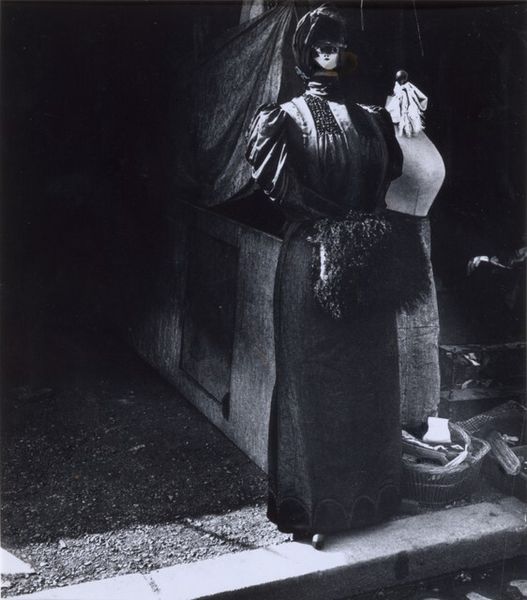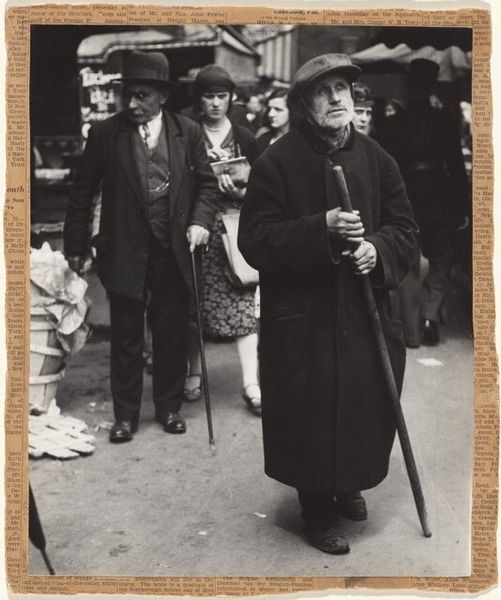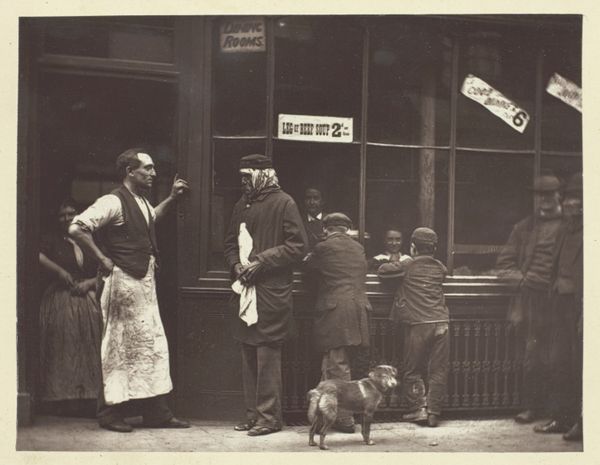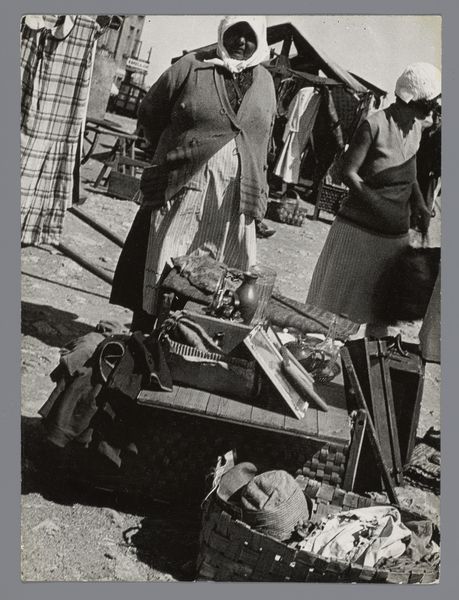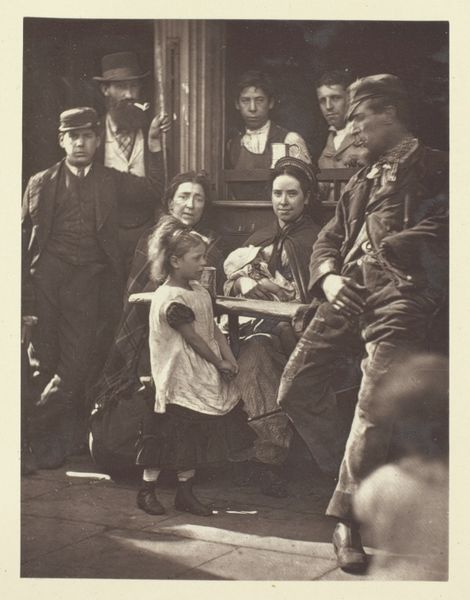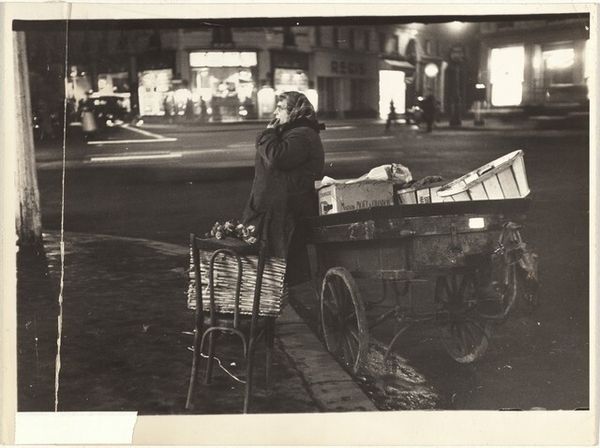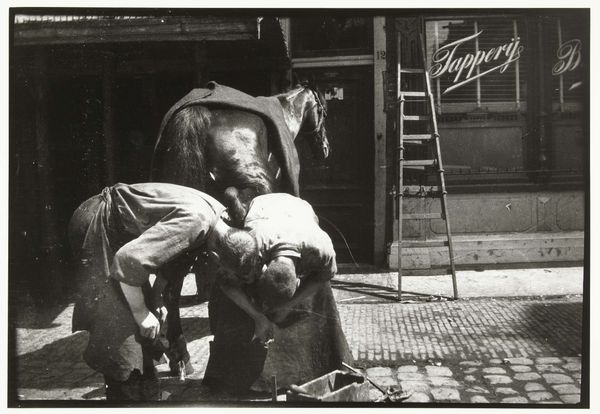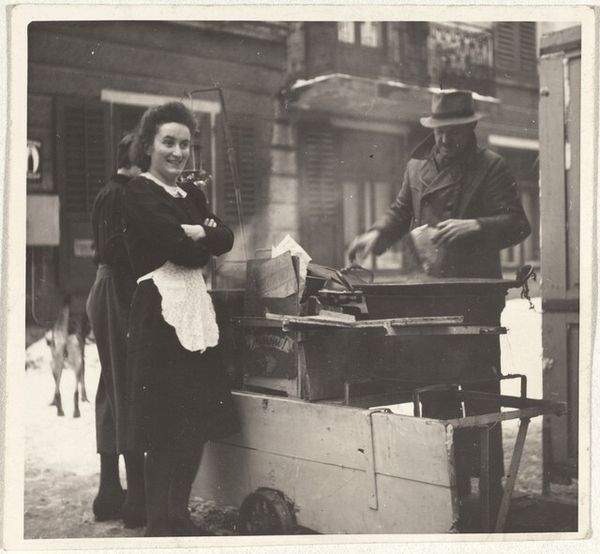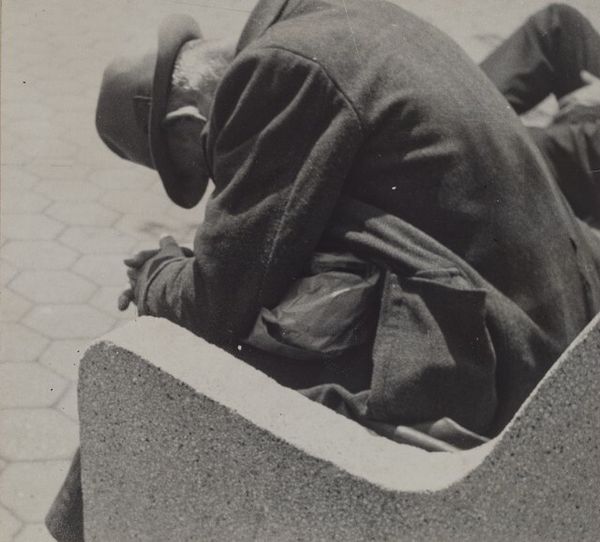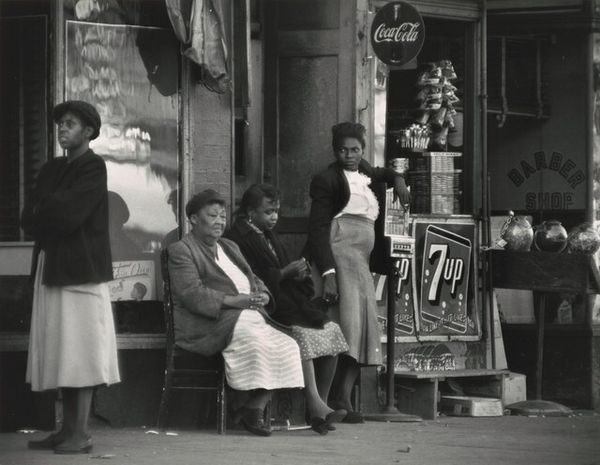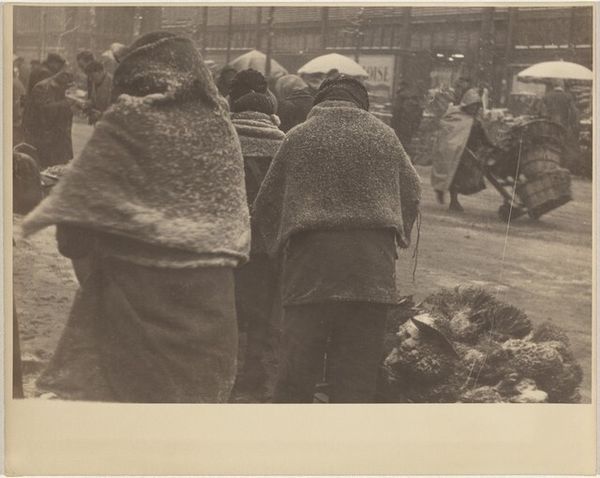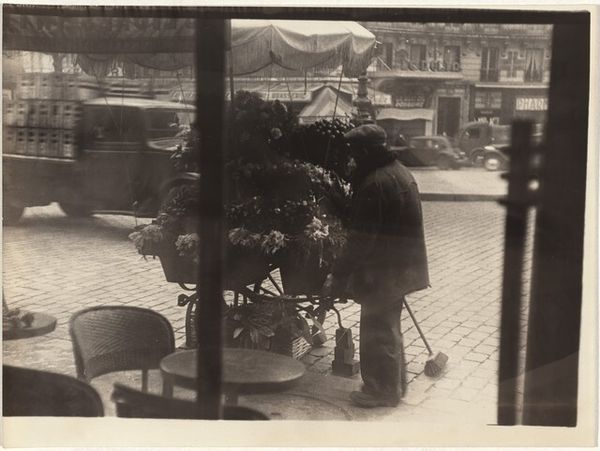
Dimensions: sheet (trimmed to image): 25.3 x 20.2 cm (9 15/16 x 7 15/16 in.)
Copyright: National Gallery of Art: CC0 1.0
Curator: Robert Frank’s gelatin silver print, titled "Paris", dating from 1951, strikes me immediately as an essay in tonal contrast. The greys are so masterfully distributed across the image. Editor: It's certainly somber. Looking beyond the grayscale, I see it as an interesting glimpse into the socio-economic conditions of postwar Paris. Notice the working class depicted in their habits of labor, juxtaposed against symbols, the trappings and traditionalism implied in the presence of a nun or religious sister within the chaos of the commercial market square. Curator: Yes, that figure dominates the composition, doesn't it? The sharp, almost brutal, realism that the silver gelatin allows Frank to achieve heightens the moment; note how her upward gaze directs our own. The geometry is stark—a confluence of verticals and horizontals in the stall's supports that give order to an otherwise messy, uncontrolled moment. Editor: Exactly! And those stalls suggest temporary architectures, easily assembled, disassembled, speaking to the unstable conditions of life for the people depicted. Look closely, it's clear Frank chose to photograph figures often overlooked by mainstream narratives. By presenting this image, he forces a dialogue around social hierarchies, labor, and faith at an historical inflection point. Curator: You raise compelling points, especially regarding hierarchies of subject matter. The blurring in the background versus the sharp focus on the foreground reinforces the distinction he is interested in between foreground and background. Editor: The material reality here is critical: cheap print, the fleeting existence of newspaper, produce, against religious iconography. Frank, through his careful attention to details of the photographic method, highlights labor as a defining element of human existence. This image should be a springboard for thinking about these subjects and our consumption of it through his creative eye. Curator: Ultimately, though, I think it’s a deeply spiritual work—a stark black-and-white Pietà set not in a cathedral, but on a city street. The photograph stands not just as a moment captured but also a visual language refined.
Comments
No comments
Be the first to comment and join the conversation on the ultimate creative platform.

